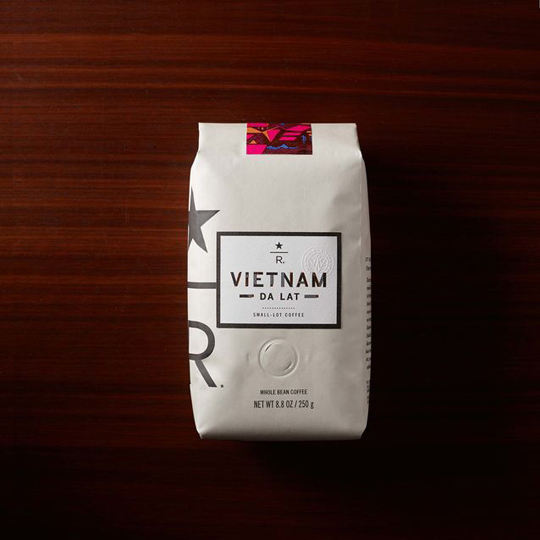|
Da Lat’s cultivation area for arabica coffee
shrinks
Da Lat’s arabica
coffee is well-known for its quality, as recognised by Starbucks, which
recently began selling it at its stores. But the size of the arabica-coffee
growing area in Da Lat is shrinking.

Starbucks said on its website that it plans
to sell Cau Dat coffee in more than 21,500 of its stores in 56 countries.
This is the first time an Arabica coffee grown in
The price for one kilo of roasted Da Lat coffee at Starbucks stores is $50. Leslie Wolford, senior expert of Starbucks coffee, said the quality of Arabica coffee in Da Lat was high. However, the bad news is that the annual output in Dalat is modest because the growing area has shrunk. The French began growing arabica coffee trees in the Cau Dat area of Xuan Truong commune in Da Lat in Le Van Tho, 85, in Xuan Truong commune, said he first heard about Cau Dat coffee 60 years ago. At that time, the French collected coffee beans and roasted and then packed them with the “Arabica du Tonkin” brand for export. “The coffee was reserved for the upper class and export only. It was not for common people,” he said. The coffee trees have existed in Cau Dat for 140 years, but the growing area has become much smaller. Arabica coffee is not found on the list of the crops the local authorities have encouraged to develop. There are about 3,400 hectares of Da Lat coffee growing area, mostly Arabica coffee, located in the communes of Xuan Truong, Tram Hanh and Ta Nung. And about 140,000 hectares of coffee growing area exist in the According to the Xuan Truong commune Farmers’ Association, local farmers chopped down arabica coffee trees to grow other crops because of the low economic benefits and a high risk of insects. As a result, the arabica coffee growing area has decreased by 300 hectares over the last five years to 1,000 hectares. In Da Lat City, farmers keep fresh coffee beans in storage before drying and peeling. Experts believe that coffee beans need to be dried immediately after harvesting to ensure quality. An official of the Vietnam Coffee and Cocoa Association noted that the majority of farmers growing coffee in the area still process coffee according to traditional family formulas, and have not received professional training. NLD |
Chủ Nhật, 23 tháng 8, 2015
Đăng ký:
Đăng Nhận xét (Atom)
Không có nhận xét nào:
Đăng nhận xét